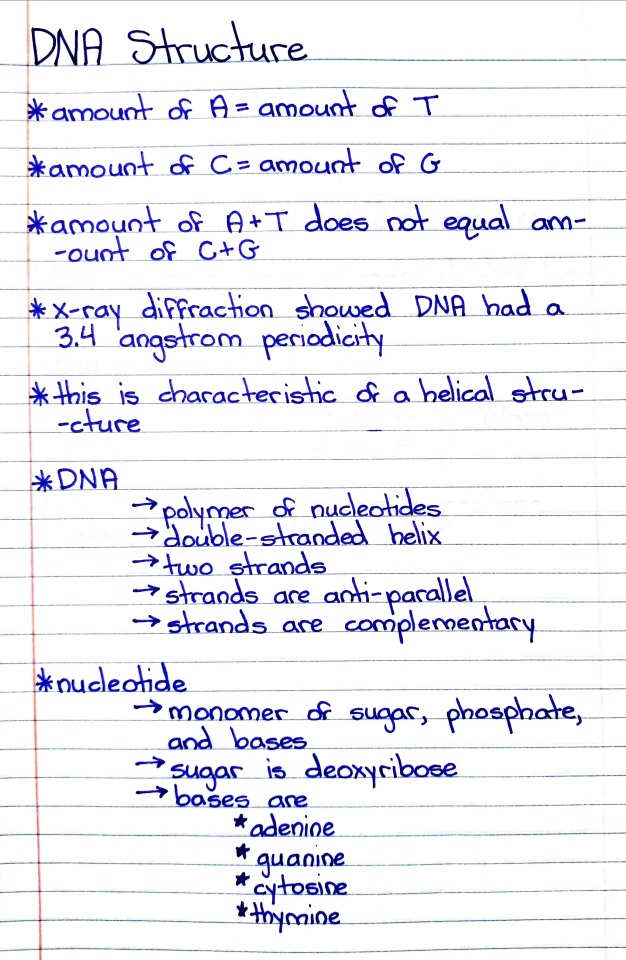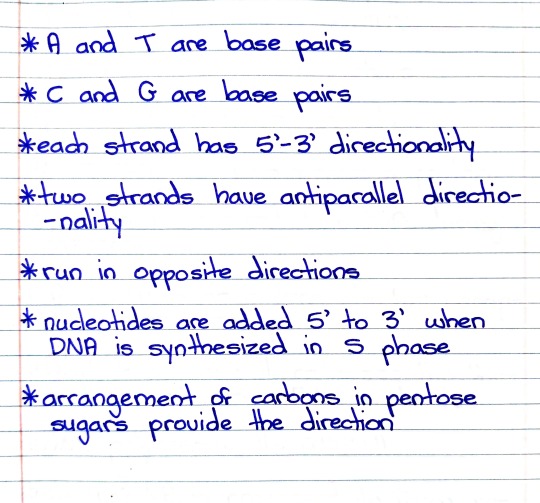#dna synthesis
Text
Vitamin B12: What to Know
Vitamin B12: What to Know
Introduction:
Vitamin B12, also known as cobalamin, is a vital nutrient that plays a crucial role in maintaining overall health and well-being. Despite its importance, many individuals may not be aware of the signs of B12 deficiency or how it can impact their health. In this comprehensive guide, we’ll explore the significance of vitamin B12, common symptoms of deficiency, and strategies for…

View On WordPress
#anemia#animal products#B12 absorption#B12 deficiency#B12 deficiency treatment#B12 injections#B12 supplements#balanced diet#breastfeeding#cardiovascular issues#celiac disease#cobalamin#cognitive impairment#Crohn&039;s disease#dietary guidance#Dietary Guidelines#dietary intake#dietary recommendations#dietary sources#dietary supplements#DNA synthesis#fatigue#fetal development#gastric surgery#Gastrointestinal Disorders#Health and Wellness#Health Awareness#Health Education#health risks#Healthcare
2 notes
·
View notes
Photo


#studyblr#notes#genetics#genetics notes#dna#dna structure#structure of dna#nucleotides#dna strands#dna synthesis#pentose#x-rays#x-ray diffraction#helical structure#carbons#carbon#dna direction#dna strand direction
5 notes
·
View notes
Text

DNA Data Storage Market | DNA synthesis & sequencing | Market Size | 2035
The Roots Analysis report delves into a comprehensive examination of the present market landscape and the likely evolution of this industry over the next fifteen years. It presents a detailed analysis of the technology and service providers involved inDNA-based data storage. One of the key objectives of the report was to estimate the current opportunity.
0 notes
Text
Childhood medulloblastoma: looking for selective options that would spare brain damages
Childhood medulloblastoma: looking for selective options that would spare brain damages
Medulloblastoma is the most common pediatric brain tumor, and brain tumors have recently overtaken leukemia as the deadliest childhood malignancy. All types of medulloblastoma originate from neural stem cells in the cerebellum, the part of the brain that controls voluntary actions such as walking, balance, coordination and speech. This cancer begins when cell development in the cerebellum goes…

View On WordPress
#anticancer drug#cancer cells#cytoskeleton#DNA synthesis#drug resistance#histone deacetylase#medulloblastoma#metastasis#oncogene#pyrimidine
0 notes
Text
i’ve been student teaching for a month now which means the kids are getting comfortable enough to start outing themselves to me now. nobody tells you this about being a gay teacher, but stem subject or not you are going to have to start supporting high school theater
#they keep inviting me to the musical. which is the absolute last way i want to spend my saturday but i probably have to#its so funny tho like. the reaches. you did not have to mention you have a boyfriend in your answer for this entry task about dna synthesis
32 notes
·
View notes
Text
head in hands WHAT THE ACUTLA HELL ARE THE STEPS OF PROTEIN SYNTHEISIS
#my review sheet for the test tmr is 4 pages long#protein synthesis and mitosis and meiosis and dna replication and what dna is and codons and anticodons and the codon wheel and rna and#transcription and translation and uhh i forgot the term for making more dna#THATS ALL IN A SINGULAR TEST#HEAD IN HANDS
24 notes
·
View notes
Text
The White House has issued new rules aimed at companies that manufacture synthetic DNA after years of warnings that a pathogen made with mail-order genetic material could accidentally or intentionally spark the next pandemic.
The rules, released on April 29, are the result of an executive order signed by President Joe Biden last fall to establish new standards for AI safety and security, including AI applied to biotechnology.
Artificially generated DNA allows researchers to do all sorts of things—develop diagnostic tests, make beneficial enzymes to eat up plastic, or engineer potent antibodies to treat disease—without having to extract natural sequences from organisms. Need to study a rare type of bacteria? Instead of going out into the field to collect a sample, its genetic sequence can simply be ordered from a DNA synthesis company instead.
Synthesizing DNA has been possible for decades, but it’s become increasingly easier, cheaper, and faster to do so in recent years thanks to new technology that can “print” custom gene sequences. Now, dozens of companies around the world make and ship synthetic nucleic acids en masse. And with AI, it’s becoming possible to create entirely new sequences that don’t exist in nature—including those that could pose a threat to humans or other living things.
“The concern has been for some time that as gene synthesis has gotten better and cheaper, and as more companies appear and more technologies streamline the synthesis of nucleic acids, that it is possible to de novo create organisms, particularly viruses,” says Tom Inglesby, an epidemiologist and director of the Johns Hopkins Center for Health Security.
It’s conceivable that a bad actor could make a dangerous virus from scratch by ordering its genetic building blocks and assembling them into a whole pathogen. In 2017, Canadian researchers revealed they had reconstructed the extinct horsepox virus for $100,000 using mail-order DNA, raising the possibility that the same could be done for smallpox, a deadly disease that was eradicated in 1980.
The new rules aim to prevent a similar scenario. It asks DNA manufacturers to screen purchase orders to flag so-called sequences of concern and assess customer legitimacy. Sequences of concern are those that contribute to an organism’s toxicity or ability to cause disease. For now, the rules only apply to scientists or companies that receive federal funding: They must order synthetic nucleic acids from providers that implement these practices.
Inglesby says it’s still a “big step forward” since about three-quarters of the US customer base for synthetic DNA are federally funded entities. But it means that scientists or organizations with private sources of funding aren’t beholden to using companies with these screening procedures.
Many DNA providers already follow screening guidelines issued by the Department of Health and Human Services in 2010. About 80 percent of the industry has joined the International Gene Synthesis Consortium, which pledges to vet orders. But these measures are both voluntary, and not all companies comply.
Kevin Flyangolts, founder and CEO of New York–based Aclid, a company that offers screening software to DNA providers, says he’s glad to see the White House taking action. “While the industry has done a pretty good job of putting some protocols in place, it’s by and large not consistent,” he says. Still, he hopes Congress will adopt formal legislation by requiring all DNA providers to screen orders.
Last year, a bipartisan group of legislators introduced the Securing Gene Synthesis Act to mandate screening more broadly, but the bill has yet to advance.
Emily Leproust, CEO of Twist Bioscience, a San Francisco DNA-synthesis company, welcomes regulation. “We recognize that DNA is dual-use technology. It’s like dynamite, you can build tunnels, but you can also kill people,” she says. “Collectively, we have a responsibility to promote the ethical use of DNA.”
Twist has been screening sequences and customers since 2016, when it first started selling nucleic acids to customers. A few years ago, the company hired outside consultants to test its screening processes. The consultants set up fake customer names and surreptitiously ordered sequences of concern.
Leproust says the company successfully flagged many of those orders, but in some cases, there was internal disagreement on whether the sequences requested were worrisome or not. The exercise helped Twist adopt new protocols. For instance, it used to only screen DNA sequences 200 base pairs or longer. (A base pair is a unit of two DNA letters that pair together.) Now, it screens ones that are at least 50 base pairs to prevent customers from shopping around for smaller sequences to assemble together.
While Twist has tightened its own screening measures, Leproust still worries about some hypothetical scenarios that are beyond her control. For instance, a state actor with bad intentions could start making its own gene sequences. “Probably the biggest risk is if a state wants to build their own DNA synthesis capabilities,” she says. “They may be able to do it, because states have vast resources.”
#us politics#news#wired#biden administration#president joe biden#2024#synthetic DNA#regulations#International Gene Synthesis Consortium#Department of Health and Human Services#Johns Hopkins Center for Health Security#Securing Gene Synthesis Act#dna#science#Twist Bioscience#Aclid#bioscience#genetics#diseases#pathogens#bacteria#custom gene sequences#gene synthesis
2 notes
·
View notes
Text

12/05/2023
literally colonised my best friends office <3
#the thing about studying sciences is you will NOT escape mitosis and meiosis#its just that now its in such excruciating detail and im not even learning abt it im learning abt DNA packing#as a lead up to fuckin protein synthesis which is my WEAKNESS like even at the highschool level of detail it sucked so much#anyway. convincing myself that writing stuff out means i have learned.#how do the studyblr girls have such aesthetic setups i WISH bruh#this is uhhhh gremlin academia. chaotic academia. sitting hunched on the wrong side of an office desk in a cramped ass corner w ur friend#who is doing her grown ass adult job by the way. i was at the university library nearby and then my ipad fuckin DIED bc do u think#i charge my devices beforehand? NO! productivity strikes me and i RUN before it abandons me again so i barged in and stole her charger#but! i got something done! better than nothing!#one day ill work out how i wanna organise this blog but for now its just a liveblog basically
10 notes
·
View notes
Text
I hate studying i hate college man this class SUCKS
#bio is so mid bro bc i dont have time to be memorizing DNA synthesis#I have work and a parent who doesnt know how to use a computer#my hands are FULL
3 notes
·
View notes
Text
mad that it really was a vitamin fucking with my sense of bodily autonomy and control for months but i Do love to no longer feel pure animal terror every time i merge towards a car in another lane
#ohhhhh you only need b12 for#dna synthesis and amino acid and fatty acid synthesis#and your nerve sheaths and your Red Blood Cells#that’s all lol#cofactors………#coordination and mood and and and and
4 notes
·
View notes
Text
What Happens if Your B12 Deficiency Is Left Untreated?
What Happens if Your B12 Deficiency Is Left Untreated?
Introduction:
Vitamin B12, an essential nutrient for nerve function, red blood cell production, and DNA synthesis, plays a critical role in maintaining overall health. However, when B12 deficiency goes untreated, it can lead to a range of health issues, from minor discomforts to severe complications. In this blog, we’ll explore the potential consequences of ignoring B12 deficiency and why timely…

View On WordPress
#anemia#anxiety#B12 deficiency#cardiovascular risks#cobalamin deficiency#cognitive decline#dementia risk#depression#dietary insufficiency#DNA synthesis#Early intervention#hallucinations#health risks#healthcare professional.#heart health#homocysteine levels#Medical Conditions#megaloblastic anemia#mental well-being#nerve damage#nerve function#neurological complications#neurological symptoms#pregnancy complications#psychiatric symptoms#psychosis#red blood cell production#untreated B12 deficiency#Vitamin B12 deficiency#vitamin deficiency
0 notes
Text
Enhancing Protein Purification with Fast Protein Liquid Chromatography
Protein purification is a crucial process in biochemistry and molecular biology, enabling the isolation of specific proteins from complex mixtures. This process is essential for studying protein structure, function, and interactions. Purified proteins are necessary for various applications, including drug development, enzyme studies, and structural bi ology. The ability to isolate proteins with high purity is fundamental to advancing scientific knowledge and applications.

Methods of Protein Purification
Several methods are used for protein purification, including precipitation, centrifugation, and chromatography. Chromatography, in particular, offers high specificity and resolution, making it a preferred choice for purifying proteins. Each method has its advantages and limitations, depending on the nature of the protein and the desired purity. Combining multiple methods can enhance the overall efficiency and yield of the purification process.
Role of Fast Protein Liquid Chromatography
Fast Protein Liquid Chromatography (FPLC) is a specialized form of liquid chromatography designed for protein purification. FPLC systems operate at lower pressures than high-performance liquid chromatography (HPLC), making them suitable for delicate protein molecules. This technique ensures high purity and yield of the target protein. FPLC is widely used in both research and industrial settings due to its efficiency and reliability. The ability to handle large sample volumes is another advantage of FPLC systems.
Applications of FPLC in Research
FPLC is widely used in both academic and industrial research settings. It is essential for the production of recombinant proteins, purification of antibodies, and characterization of protein complexes. The technique's ability to handle large volumes and achieve high resolution makes it invaluable for protein research. FPLC is also used in the pharmaceutical industry for the development and production of biopharmaceuticals. Its versatility and reliability make it a staple in many laboratories.
Advantages of FPLC
FPLC offers several advantages, including gentle handling of proteins, high reproducibility, and the ability to separate proteins based on various properties such as size, charge, and affinity. These features make FPLC a versatile tool for purifying a wide range of proteins. The automated nature of FPLC systems reduces the risk of human error and increases the efficiency of the purification process. Additionally, FPLC can be easily scaled up for industrial applications, making it suitable for both small-scale research and large-scale production.

Conclusion
Protein purification, facilitated by techniques like fast protein liquid chromatography, is vital for advancing our understanding of biological processes. FPLC provides researchers with the tools to isolate and study proteins with high precision and efficiency. As technology evolves, FPLC systems will continue to improve, offering even greater capabilities. For more information on advanced protein purification systems, visit inscinstech.com.cn.
Blog Source URL:
#Chromatography#Liquid Chromatography#oligonucleotide synthesis#DNA Synthesizer#lab equipment#AKTA#protein purification#Fast Protein Liquid Chromatography#FPLC#fplc chromatography
0 notes
Text
According to the latest publication from Meticulous Research®, the global Next-Generation Sequencing (NGS) market is projected to reach $27.5 billion by 2030, growing at a CAGR of 15.8% from 2023 to 2030. This growth is primarily driven by the increasing prevalence of cancer and its applications in treatment and research, declining genome sequencing costs, advancements in sequencing technology, rising pharmaceutical R&D investments, expanding genome mapping initiatives, and improved regulatory and reimbursement frameworks for NGS-based diagnostics.
#Next Generation Sequencing Market#NGS Market#Next Generation Sequencing#Massive Parallel Sequencing#Next-generation DNA Sequencing#Targeted Sequencing#High-throughput Sequencing#NGS technology#Sequencing by Synthesis#next generation sequencing companies
0 notes
Text
Factors Hindering the DNA Synthesis Market

The global DNA synthesis industry is poised for a remarkable surge, propelled by the accelerating pace of advancements in genomics research. According to a recent analysis by Future Market Insights, a leading market research firm, the market is projected to experience a stellar Compound Annual Growth Rate (CAGR) of 13.2% from 2023 to 2033. This translates to a significant market expansion, with the value expected to climb from US$2,898.3 million in 2023 to a staggering US$9,999.6 million by 2033.
DNA synthesis, a realm encompassing both natural and artificial processes, is undergoing a profound paradigm shift. In the natural domain, the intricate process of nucleic acid strand creation through DNA replication unfolds. Concurrently, laboratories worldwide are embracing the synthetic approach, leveraging the power of genetic engineering and enzyme chemistry to drive groundbreaking advancements across diverse domains. These applications span therapeutics, diagnostics, and academic and industrial research, heralding a new era of innovation.
The industry is witnessing an unprecedented surge in DNA synthesis adoption, positioning itself as a catalyst for revolutionizing scientific research, healthcare, and innovation. As this surge unfolds, the sector is poised to redefine the landscape of discovery, contributing significantly to a brighter and healthier future for humanity.
Request a Sample Report Now to get Premium Insights Use Work Email to Get Quick Reply:https://www.futuremarketinsights.com/reports/sample/rep-gb-5900
0 notes
Text
Gene Fragment Services
Accelerate your genetic research with our custom gene fragment services. We synthesize and provide high-quality DNA fragments tailored to your specifications, ensuring accuracy and efficiency in your cloning, gene editing, and synthetic biology projects.
0 notes